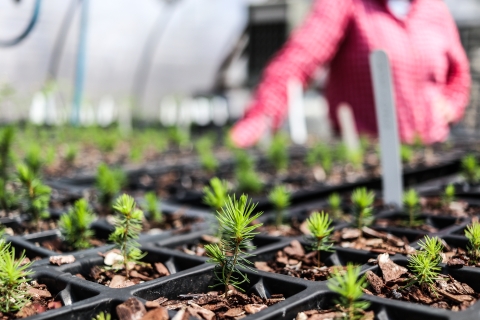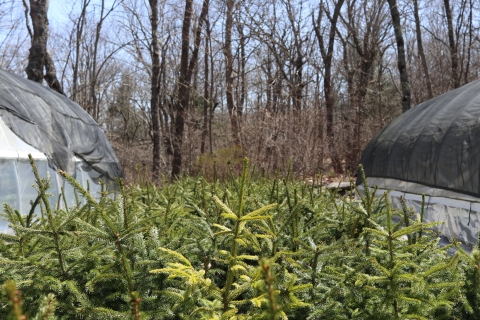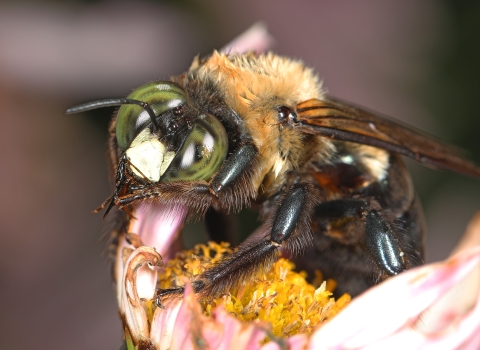At the top of the hill, at the end of a winding road near Lake Toxaway, sits the Southern Highlands Reserve, an arboretum and research center. A tour reveals red spruce seeds stored in a refrigerator, young spruce trees in the green house, and spruce trees growing in gallon buckets under the open sky.
Red spruce, along with Fraser fir, are the conifer trees found at the tops of the highest mountains in Southern Appalachian, creating habitat for the endangered Carolina northern flying squirrel and spruce-fir moss spider. The extent of these forests was drastically reduced one hundred years ago due to unsustainable logging and subsequent forest fire. Today, conservationists are working to restore them.
Part of that restoration work is simply planting trees, but those trees have to come from somewhere. To create a supply of trees for planting, staff from places like Southern Highlands Reserve work with land managers to collect cones. Seeds are harvested from the cones, then planted in a nursery situation where they are transplanted into larger containers as they grow, until they are carried to the forest for out-planting. In the effort to restore red spruce, Southern Highlands Reserve and others producing the young trees play a foundational role.







